When planning a walking holiday or a multi-day trek, most people focus on the big things like shoes, backpack, or route. But one small piece of gear quietly decides whether your walk feels effortless or endless: your socks. Choosing the best socks for long distance walking is not about style but about how your feet feel after ten, twenty, or even thirty kilometers. In fact, many walkers learn the hard way that the wrong socks can ruin even the most beautiful trail. Blisters appear, feet get sore, and every step starts to feel twice as long.
The right pair, however, can make you feel like you could keep walking forever. In this article, we’ll show you why socks deserve their own spotlight and what to look for when finding the perfect pair for your next long-distance adventure.
If you’re still new to this world, you might want to read more about what a walking holiday really is and how to get ready for it. Preparation goes a long way, just like on the Camino! For that, you’ll find plenty of helpful tips on training for your pilgrimage and choosing the right shoes for long walks. And since tired feet can happen to anyone, you might also like our guide on what to do about hiking injuries.
Why the Right Socks Make All the Difference
The best socks for long distance walking do more than keep your feet comfortable. In fact, socks in general play a key role in temperature control. On hot days, breathable fibers help your feet stay dry and cool, while in colder weather, insulating materials retain warmth without trapping moisture. Over time, this balance reduces swelling and fatigue: two things that can quickly shorten a walking day.
The most well-known culprits of discomfort are blisters. They’re caused by a mix of friction, moisture, and heat. A good pair of hiking socks helps prevent all three by wicking sweat away, cushioning high-pressure areas, and fitting snugly without rubbing. This becomes especially important on long-distance routes such as the Camino de Santiago, the Camí de Ronda in Menorca, or Portugal’s Fishermen’s Trail, where small discomforts can easily turn into big problems.
Key Features to Look For in Long-Distance Walking Socks
The best socks for long distance walking combine comfort, breathability, and durability in a way that keeps your feet happy day after day. Here’s what to look for before setting off on your next walking holiday.
Material
The fabric is the foundation of your comfort. Merino wool is one of the best materials for long-distance walks because it naturally regulates temperature, resists odors, and feels soft against the skin. It keeps your feet warm when it’s cold and cool when it’s hot, which is ideal for the unpredictable conditions of long-distance walking. Synthetic blends, often combining nylon, polyester, or elastane dry quickly, wick moisture effectively, and add durability to your socks. Many of the best socks for long distance walking use a mix of Merino and synthetics to achieve the perfect balance between comfort and strength.
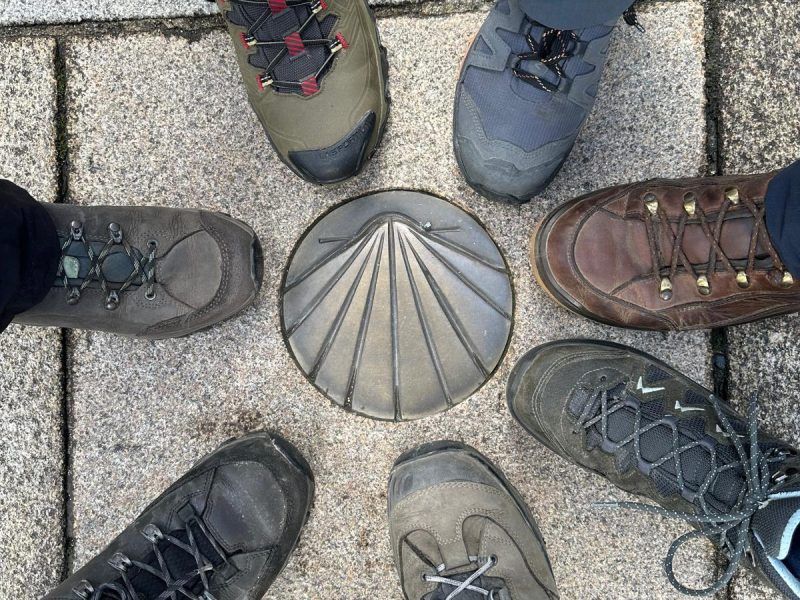
Cushioning and thickness
The right amount of cushioning helps prevent foot fatigue and adds comfort over rocky or uneven terrain. Some walkers prefer medium cushioning for all-day comfort, while others like lightweight socks for a closer fit with their hiking shoes. Think about the type of trail you’ll be walking and how much protection you need.
Moisture-wicking capabilities
Moisture is one of the biggest enemies of happy feet. The best socks for long distance walking are designed to pull sweat away from your skin and let it evaporate quickly. This helps to prevent blisters, odors, and that unpleasant damp feeling after a long day on the trail. Look for socks labeled as “moisture-wicking” or “quick-drying,” and try to avoid cotton.
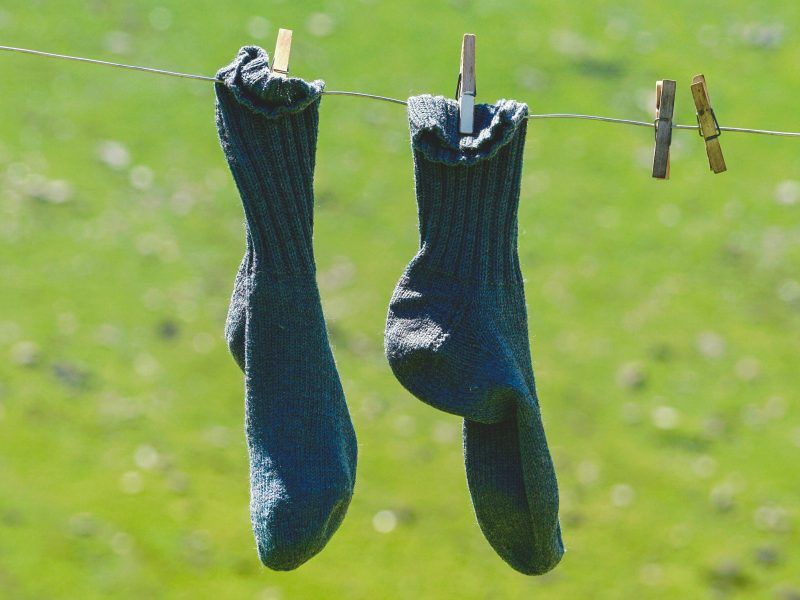
Seamless design
A seamless or flat-toe design eliminates rubbing and reduces the risk of blisters on long walks. It’s a small feature, but one you’ll appreciate after ten or more kilometers a day. If you’re serious about finding the best socks for long distance walking, this is one of the first details to check on the label.
Compression zones
Compression zones improve circulation and reduce swelling, especially helpful on long-distance walks when your feet are under constant pressure. Light compression around the arch and ankle provides extra support and helps your socks stay in place throughout the day. Therefore for demanding routes or travelers who walk with heavy backpacks, the best socks for long distance walking often include graduated compression to enhance comfort and recovery.
Fit and durability
Your socks should hug your feet without slipping or feeling tight. Loose socks cause friction, while overly snug ones restrict movement. Try them on with your walking shoes before committing to a long trail. Reinforced heels and toes are signs of good quality, and investing in a few pairs of high-performance socks is far better than replacing cheap ones every trip. In the end, the best socks for long distance walking are the ones that stay comfortable, breathable, and reliable from your first step to your last.
Our Top Picks: Best Socks for Long Distance Walking in 2025
With so many options out there, finding the best socks for long distance walking can feel surprisingly tricky. The right pair depends on where you’re going, the weather you’ll face, and how your feet respond to long days on the trail. Below, we’ve gathered a few reliable choices that balance comfort, durability, and breathability, tested by walkers who know what it’s like to spend hours on their feet.
Light Hiker Micro Crew Lightweight Hiking Socks
If you’ve ever asked hikers about the best socks for long distance walking, this name probably came up. These Merino wool socks from Vermont are known for staying put, drying fast, and surviving countless kilometers without losing shape. They’re great all-rounders for year-round adventures and those who want one reliable pair that just works.
Salomon X Ultra Crew
Salomon designed these to pair with their hiking shoes, and it shows. They’re thin, breathable, and quick to dry, perfect when you’re walking in warmer weather or at a faster pace. A good pick if you like the feel of technical gear but still want comfort on long trails.
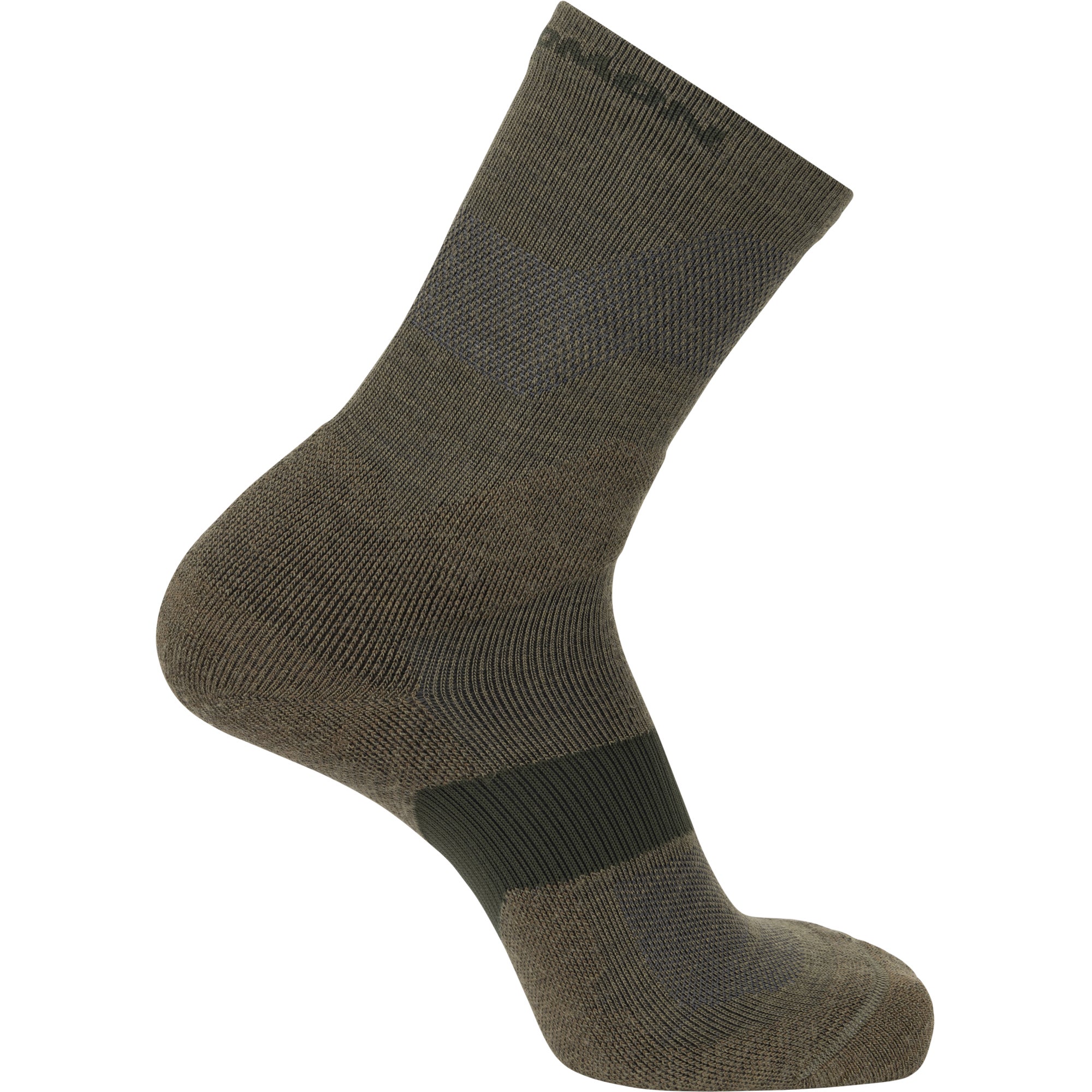
The North Face Hiking Crew Socks
These socks handle long days well without feeling bulky and are especially good for moderate climates. A solid option among the best socks for long distance walking if you want something simple and dependable.
Helly Hansen Hiking Sock Technical
For cooler or unpredictable weather, these Helly Hansen socks are a safe bet. The Merino-synthetic mix keeps your feet warm without overheating, and they hold up well on rougher terrain. Ideal for mountain trails or early-spring Camino stages when mornings start chilly.

Bridgedale Midweight Merino Performance Boot
Bridgedale might not be the flashiest brand, but their socks have earned quiet respect among long-distance walkers. They cushion well, dry quickly, and last for seasons. If you value consistency over gimmicks, these are among the best socks for long distance walking in mixed European climates.
Tips for Choosing and Caring for Your Hiking Socks
Finding the best socks for long distance walking is only half the story: knowing how to choose, test, and care for them will make sure they stay comfortable for years (and kilometers) to come. Here are some practical tips before you lace up your shoes:
Test them before your trip
Never start a long-distance walk with brand-new socks. Wear them on a few shorter walks first to see how they feel with your hiking shoes. Pay attention to any spots that rub or wrinkle, especially around the toes or heel. The best socks for long distance walking should fit snugly without slipping or folding, and they should stay comfortable even when your feet warm up.
Wash with care
To keep elasticity and softness, wash your socks inside out on a gentle cycle and avoid fabric softener, which can reduce the fibers’ ability to wick moisture. Air-drying is always best. If you’re traveling, hang them overnight and they’ll usually be dry by morning. Merino wool socks in particular last much longer when you handle them gently.
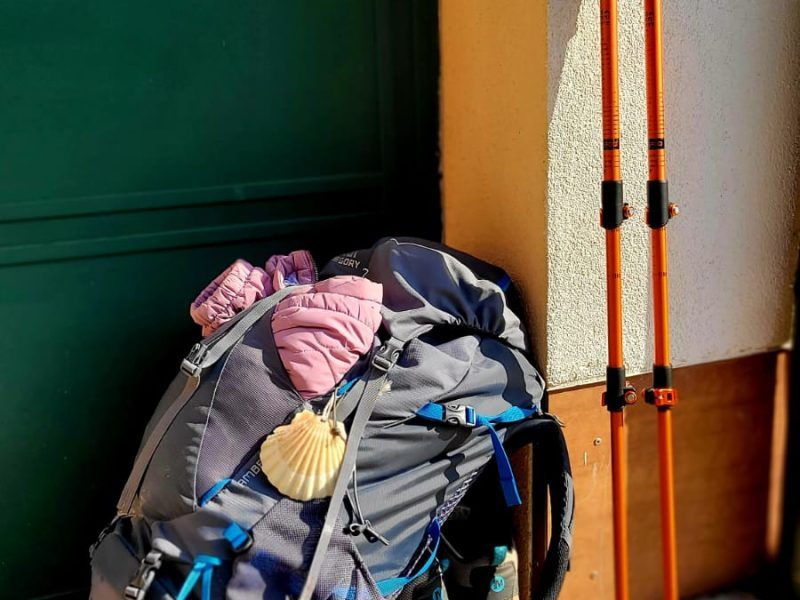
Know when to replace them
When you start seeing thinning fabric under the ball or heel, or if the elasticity around the ankle feels loose, it’s time for a new pair. Thin spots can lead to blisters, especially on longer hikes where your feet take thousands of steps per day.
Pack smart
For a Camino de Santiago or any long-distance trek, three pairs are usually enough: one on your feet, one drying, and one clean in your pack. This rotation keeps things light and hygienic, while giving each pair time to rest and air out. If you expect wet conditions, consider bringing a lightweight backup pair. After all, even the toughest boots won’t feel right without the best socks for long distance walking underneath.
The Small Detail That Makes a Big Difference
The best socks for long distance walking protect your feet from blisters, regulate temperature, and keep you moving comfortably – and while they might not be the most exciting item in your backpack, they’re one of the most important.
If you’re planning a Camino or another long-distance trail, you can also take a look at our Essential Packing List for Your Camino de Santiago de Compostela to make sure you’ve got everything covered. And if you’d rather avoid carrying too much, check out 7 Items You Think You Need for Your Walking Holiday… But Don’t for a few smart space-saving tips.
If you have any questions or need personal advice for your next long-distance walk, don’t hesitate to reach out at [email protected]. Our team is here to help you get the most out of your journey.


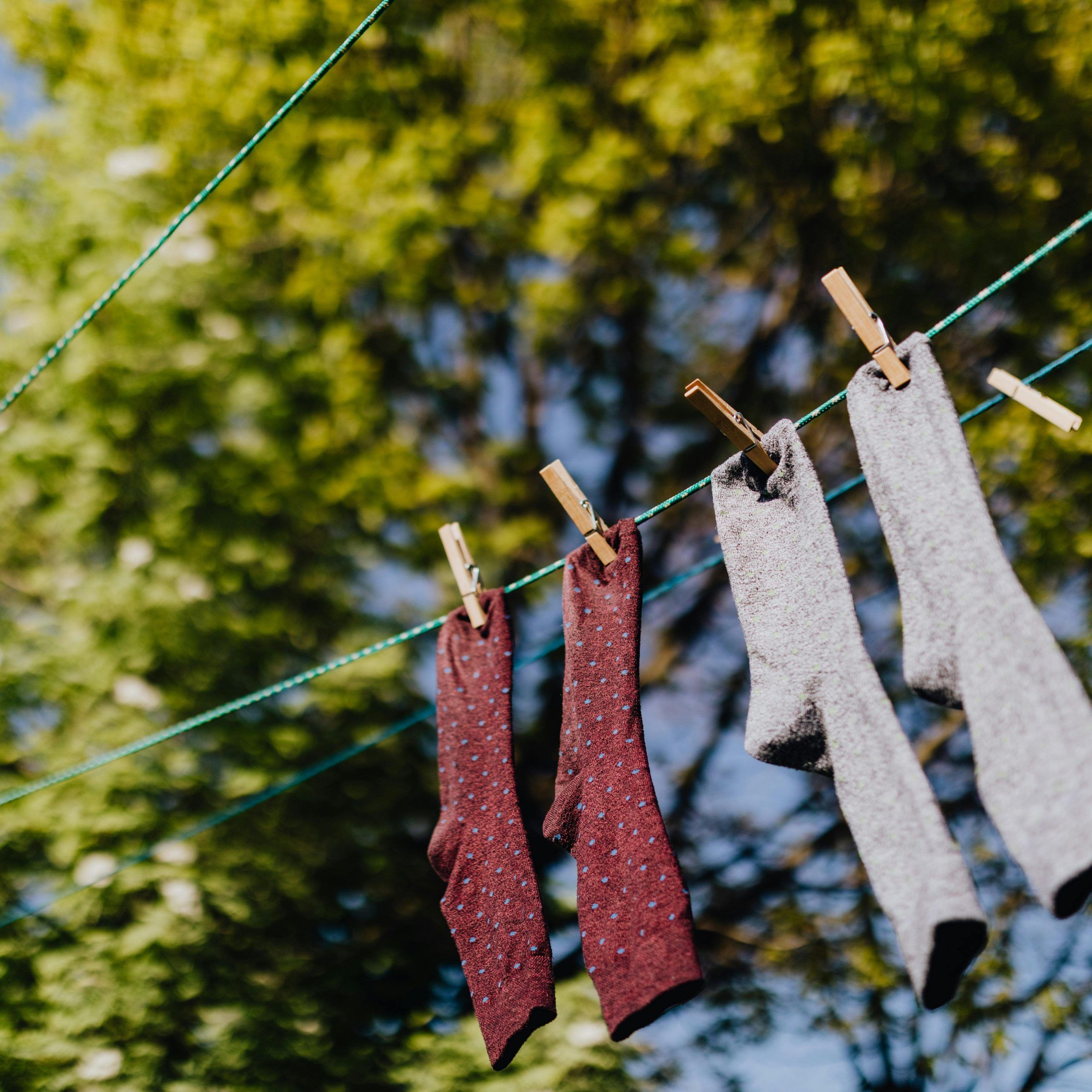
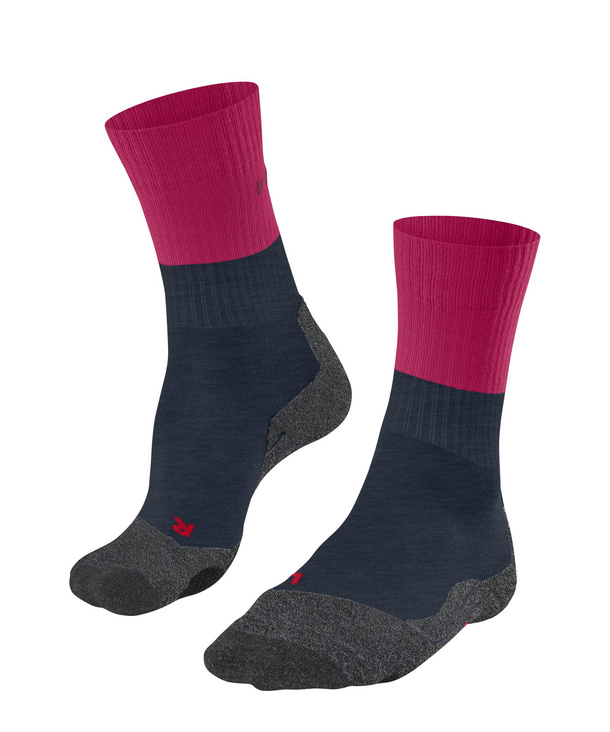
Comment (0)